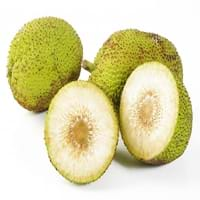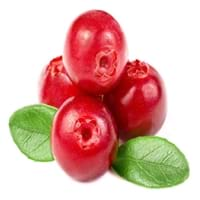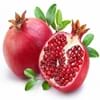Health Benefits
Cancer prevention, Heart care, Maintains healthy cholesterol level, Treatment of skin Diseases
Cancer prevention, Heart care, Kidney stone treatment, Scurvy treatment, Ulcer prevention
General Benefits
Boosts immune system, Digestive aid, Helps in weight loss, Maintains healthy cholesterol level
Anti-inflammatory properties, Boosts immune system, Digestive aid, Fights against infections, Strengthens bones
Skin Benefits
Anti-aging benefits, Skin rejuvenation, Treatment of skin diseases
Anti-aging benefits, Reduces wrinkles, Skin rejuvenation, Treatment of acne
Hair Benefits
Protects hair, Regulates hair growth, Treatment of dandruff
Promotes longer and healthier hair, Protects hair, Treatment of dandruff
Allergy Symptoms
Hives, Inflammation of nose, Swelling of mouth, tongue or lips
Anaphylaxis, Breathing difficulty, Itching, Skin rash, Swelling of mouth, tongue or lips
Side Effects
Allergic reaction
Allergic reaction, Diarrhoea, Nausea, Stomach pain, Vomiting
Best Time to Eat
Along with meal, As a snack in the late afternoon, Don't consume at night and before bed, Don't eat after meal
Any time except an hour after meal, Don't consume at night and before bed
Vitamin B5 (Pantothenic Acid)
Vitamin C (Ascorbic Acid)
Vitamin K (Phyllochinone)
Calories in Fresh Fruit with Peel
Not Available
Calories in Fresh Fruit without Peel
Not Available
Calories in Frozen Form
Not Available
Calories in Dried Form
Not Available
Calories in Canned Form
Not Available
Calories in Jam
Not Available
Type
Fruit vegetable, Tropical
Berry
Season
All seasons
Autumn
Varieties
Koqo, Tamaikora, Temaipo, Uto Kuro, Samoa, Buco Ni Viti and Kulu Dina
Early Black, Howes, Ben Lear and Stevens
Origin
South Pacific
North America
Soil Type
Loam, Sand, Sandy loam, Well-drained
Clay, Sandy, Well-drained
Climatic Conditions
Humid, Rainfall, Warm
Warm
Facts about
- The milky sap of breadfruit tree is used as glue & bark is used to make papers.
- Breadfruit tree produces 1st fruit after 2-3 years from planting & remains productive for decades.
- The seeds of breadfruit are edible.
- Europeans thought the cranberry blossom looked like the head of a sandhill crane, hence the name Cranberry.
- They are also known as bounce berries as they bounce when they ripe.
- Cranberries do not grow in water.
Top Producer
Jamaica
United States of America
Other Countries
Africa, India, United States of America
Azerbaijan, Belarus, Bulgaria, Canada, Latvia, Macedonia, NA, Romania, Tunisia, Ukraine
Top Importer
United States of America
Europe
Top Exporter
Jamaica
United States of America
Botanical Name
Artocarpus altilis
Vaccinium Macrocarpon
Synonym
Artocarpus communis or Artocarpus incisa
Oxycoccus macrocarpus
Subkingdom
Tracheobionta
Tracheobionta
Division
Magnoliophyta
Magnoliophyta
Class
Magnoliopsida
Magnoliopsida
Subclass
Magnollidae
Dillenhidae
Family
Moraceae
Ericaceae
Genus
Artocarpus
Vaccinium
Species
A. altilis
Vaccinium macrocarpon
Generic Group
Mulberry
Heath
Compare Breadfruit and Cranberry
It is important compare Breadfruit and Cranberry as both the fruits have a different nutritional value. Their comparison can be done on the basis of their vitamin and mineral content, calories, benefits as well as characteristics, making it easier for us to choose the best fruit for our diet. Their general health benefits are as follows:
Breadfruit Benefits: boosts immune system, digestive aid, helps in weight loss and maintains healthy cholesterol level.
Cranberry Benefits: anti-inflammatory properties, boosts immune system, digestive aid, fights against infections and strengthens bones.
Fruits are also used as a remedy for various hair problems. The hair benefits of Breadfruit are: protects hair, regulates hair growth and treatment of dandruff and hair benefits of Cranberry are: promotes longer and healthier hair, protects hair and treatment of dandruff. Some fruits are known to cause allergic reactions. The allergy symptoms of first fruit are: hives, inflammation of nose and swelling of mouth, tongue or lips and the symptoms of second fruit are: anaphylaxis, breathing difficulty, itching, skin rash and swelling of mouth, tongue or lips. Get sorted Breadfruit vs Cranberry comparison with the help of fruit comparison tool by fruitvs.com.









